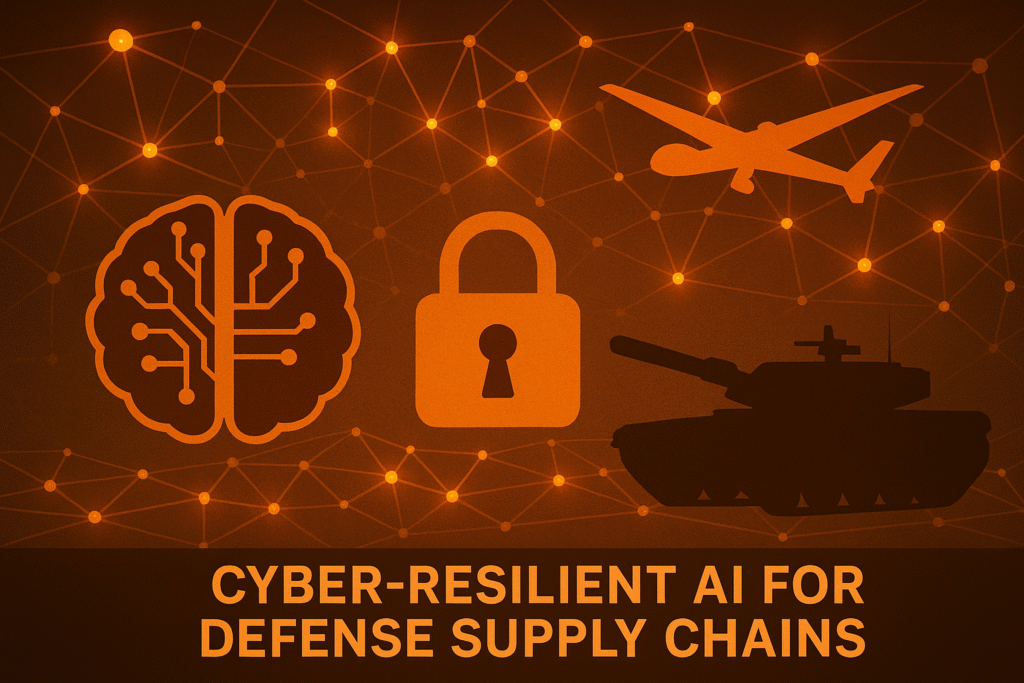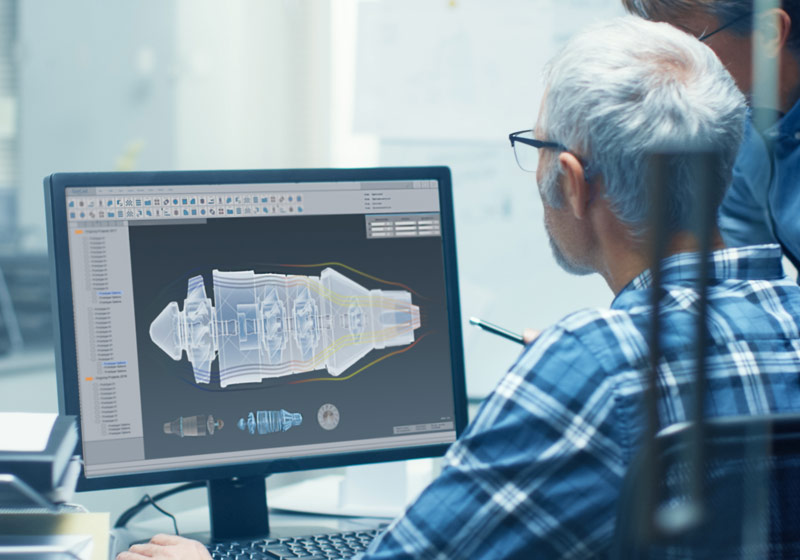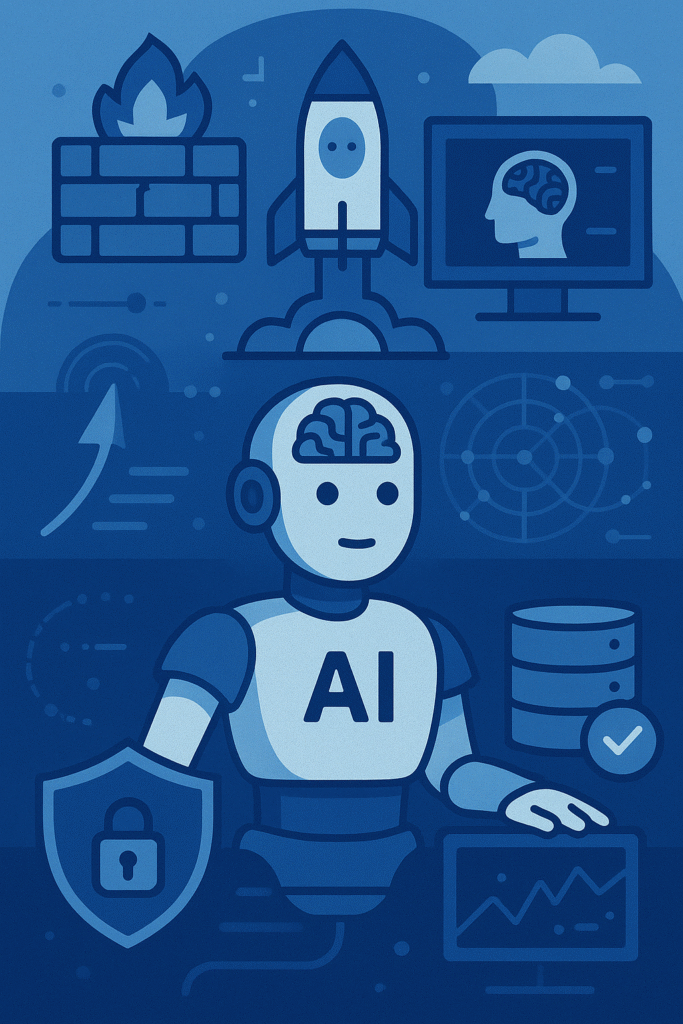Executive Summary
The defense industrial base — valued at over $400 billion annually — faces relentless cyber threats targeting AI-enabled systems and suppliers.
To stay secure, organizations must adopt cyber-resilient AI architectures that combine zero-trust principles, continuous monitoring, and layered defenses.
Key Takeaways:
- AI systems in defense supply chains are high-value cyber targets.
- Cyber resilience requires zero-trust, encryption, and AI-specific security controls.
- Compliance with CMMC 2.0, NIST, and DFARS is non-negotiable.
- Best-practice frameworks integrate detection, response, and end-to-end visibility.
The Rising Threat to Defense AI Ecosystems
Defense supply chains span thousands of interconnected suppliers, creating an attack surface that extends beyond traditional IT boundaries.
- Multi-tier networks: A single compromised sub-supplier can affect the entire chain.
- Legacy systems: Many AI integrations connect to decades-old platforms lacking modern security.
- Cross-domain data flow: Sensitive AI data often traverses multiple classification levels.
Common AI-Focused Attack Vectors
- Model Poisoning: Corrupting AI training data to produce flawed outcomes.
- Adversarial Inputs: Feeding deceptive data that tricks AI classifiers.
- Data Exfiltration: Using compromised AI models to extract sensitive program data.
Best-Practice Architecture for Cyber-Resilient AI
- Zero-Trust Foundation
Defense AI systems must verify every user, device, and process — continuously.
- IAM Controls: Implement privileged access management across all AI components.
- Network Segmentation: Isolate training, inference, and management environments.
- Data Classification: Enforce DoD-level tagging and access based on sensitivity.
- AI-Specific Security Lifecycle
- Secure Development (AI-SDL): Trace data provenance, validate models, and conduct adversarial testing.
- Model Integrity: Real-time monitoring detects anomalies or unauthorized modifications.
- Immutable Deployment: Containerize AI models in tamper-proof environments.
- Continuous Visibility
- AI-Powered Threat Detection: Identify unusual access patterns or compromised models.
- Supplier Risk Assessment: Automate CMMC compliance scoring and vulnerability scans.
- Blockchain Traceability: Use distributed ledgers for immutable supplier records.
Compliance Framework Alignment
- CMMC 2.0: Apply maturity levels for AI security from basic hygiene to continuous monitoring.
- DFARS Requirements: Protect CUI and ensure cyber-incident reporting for AI-related breaches.
- NIST SP 800-171 & 172: Adopt risk-based controls and encryption protocols for defense-grade AI systems.
Technical Architecture Snapshot
A secure AI supply chain framework typically includes:
Data → Validation → Training → Testing → Deployment → Monitoring
Each stage fortified with encryption, adversarial testing, and anomaly detection.
Key performance metrics:
- MTTD: <15 minutes for anomaly detection
- MTTR: <30 minutes for high-priority incidents
- Model Drift Detection: Within 24 hours
Real-World Deployments
F-35 Component Supply Chain
Challenge: 200+ global suppliers with varying cybersecurity maturity.
Solution: Federated learning, blockchain tracking, and AI-driven anomaly detection.
Results:
- 85% fewer security incidents
- 40% higher counterfeit detection accuracy
- Full ITAR/DFARS compliance
Naval Predictive Maintenance
Challenge: Securing AI maintenance models while protecting classified data.
Solution: Homomorphic encryption, differential privacy, and multi-party computation.
Results:
- 30% fewer unplanned maintenance events
- Zero security breaches in 18 months
Risk Mitigation and Recovery Framework
Threat Modeling
- Identify all AI data ingestion points, model access paths, and integration interfaces.
- Conduct red-team simulations against nation-state and insider threats.
Incident Response
- Detect anomalies in AI behavior
- Isolate compromised models
- Eradicate injected code
- Retrain or restore from verified backups
- Review and refine controls
Business Continuity
Maintain redundant AI models, manual fallback systems, and geographically distributed data centers for operational continuity.
Future-Proofing Cyber-Resilient AI
- Post-Quantum Security: Adopt NIST-approved quantum-resistant encryption standards.
- Self-Healing AI Systems: Build adaptive models that autonomously respond to new threats.
- Collaborative Defense: Share real-time threat intelligence across trusted supplier networks.
Implementation Roadmap
Phase 1 (0–6 months): Zero-trust foundation and supplier assessment.
Phase 2 (6–12 months): AI-SOC integration and advanced detection.
Phase 3 (12–18 months): Automated response and cross-supplier intelligence.
Phase 4 (18–24 months): Quantum-ready architecture and continuous optimization.
Conclusion
AI has become the nervous system of the defense supply chain—yet its power introduces new vulnerabilities.
By embedding cyber-resilience at the architecture level, defense contractors can protect national assets while maintaining mission readiness.
Resilient AI isn’t a project—it’s an ongoing discipline. Those who act today will define the security standards of tomorrow’s defense ecosystem.



